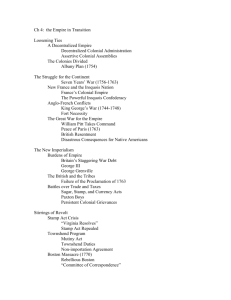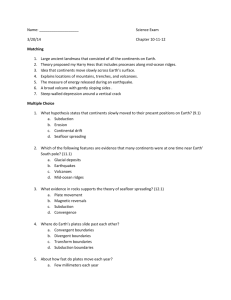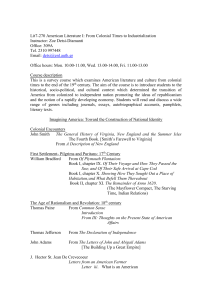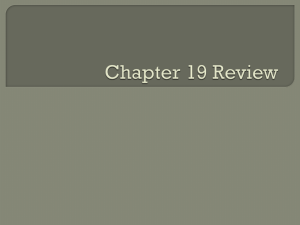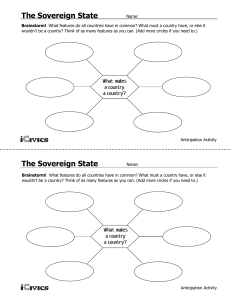Define/Describe the following:
advertisement
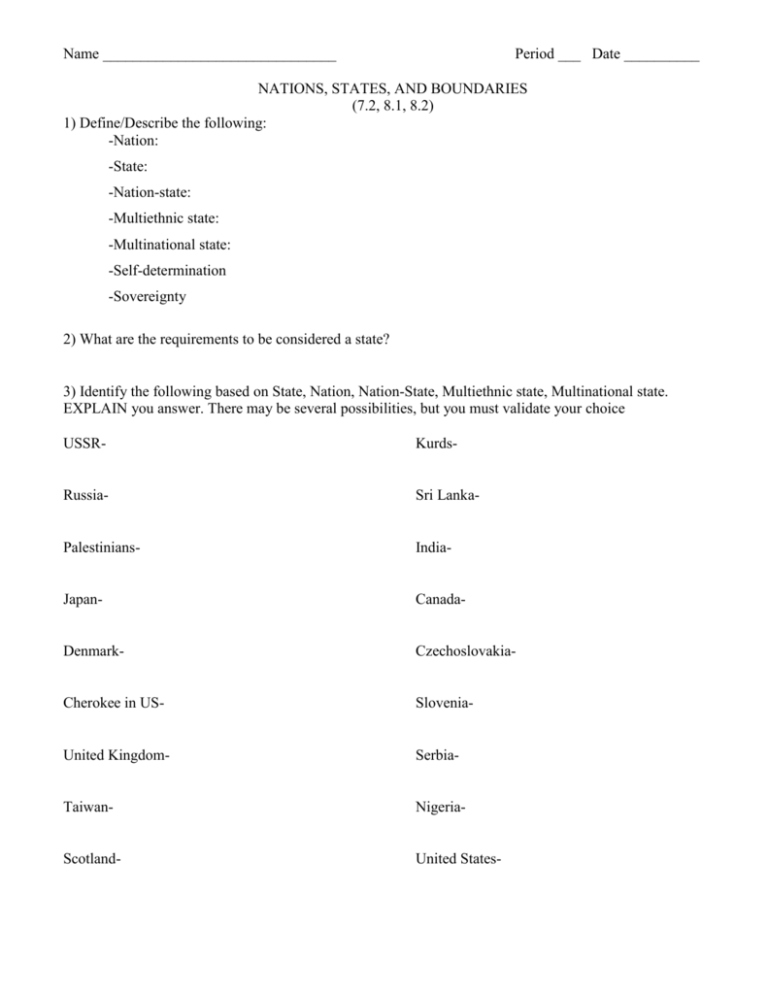
Name _______________________________ Period ___ Date __________ NATIONS, STATES, AND BOUNDARIES (7.2, 8.1, 8.2) 1) Define/Describe the following: -Nation: -State: -Nation-state: -Multiethnic state: -Multinational state: -Self-determination -Sovereignty 2) What are the requirements to be considered a state? 3) Identify the following based on State, Nation, Nation-State, Multiethnic state, Multinational state. EXPLAIN you answer. There may be several possibilities, but you must validate your choice USSR- Kurds- Russia- Sri Lanka- Palestinians- India- Japan- Canada- Denmark- Czechoslovakia- Cherokee in US- Slovenia- United Kingdom- Serbia- Taiwan- Nigeria- Scotland- United States- 4) Evaluation/Application- Statehood Briefly explain both the Taiwanese side and mainland Chinese side of the argument over whether Taiwan is a sovereign state. Then evaluate whether Taiwan should be a sovereign state, supporting your viewpoint with facts. Evaluate whether North and South Korea should unite into one sovereign state, providing historical and present-day facts to support your argument. List at least three major difficulties with unification on the Korean peninsula, and explain how these nations (or the international community) should resolve these issues. 5) Development of States The concept of dividing the world into a collection of independent states is recent. Ancient States: - The first states to evolve in Mesopotamia were known as ________________________________. - These are comprised of the _________________________ and ____________________________. - Boundaries delineated by _________________. - When one city dominated another an _________________________ was formed. Early European States: - The largest empire of the time was the ___________________________ Empire. It collapsed in the ______________________ century. - The European portion was fragmented into a large number of ________________________. - Most people were forced to live on land working and fighting for the noble in a system known as __________________________ (not in book). - A handful of powerful kings gained control of a large number of estates around the year _______ and this laid the foundation for modern states such as _______________________________. - Much of __________________ Europe remained fragmented, though, until the ________________. Colonies - European states came to control much of the world through _____________________________. - The three basic reasons for this were ________________________________________________. - The colonial era began in the __________________. It ended in the Western Hemisphere between __________________________. - The term _____________________________ is often used with Africa/Asia because ________________________________________________________________________. - The largest colonial empire ever was by the _____________________. - The differences between French colonial practices and British colonial practices were: ___________________________________________________________________________ ___________________________________________________________________________ - Most African/Asian colonies gained independence after ____________________________. - The most populous remaining colony is ___________________, owned by __________________. - The least populous remaining colony is ___________________, owned by ___________________. 6) Shapes & Boundaries: Draw examples of four of the five basic shapes: Look for two examples of each of the four shapes in two different continents (other than in textbook!). Label your boxes. Then list the advantages & disadvantages of each shape in the square. List 2 pairs of countries with each of the following boundaries. Look for ones on diff. continents. Mountain Geometric Desert Religious Water (not oceans) Language List 2 landlocked countries from each of the following continents: Asia, Africa, Europe, & South America: List 2 countries with a frontier as a boundary (may use ones in book):

